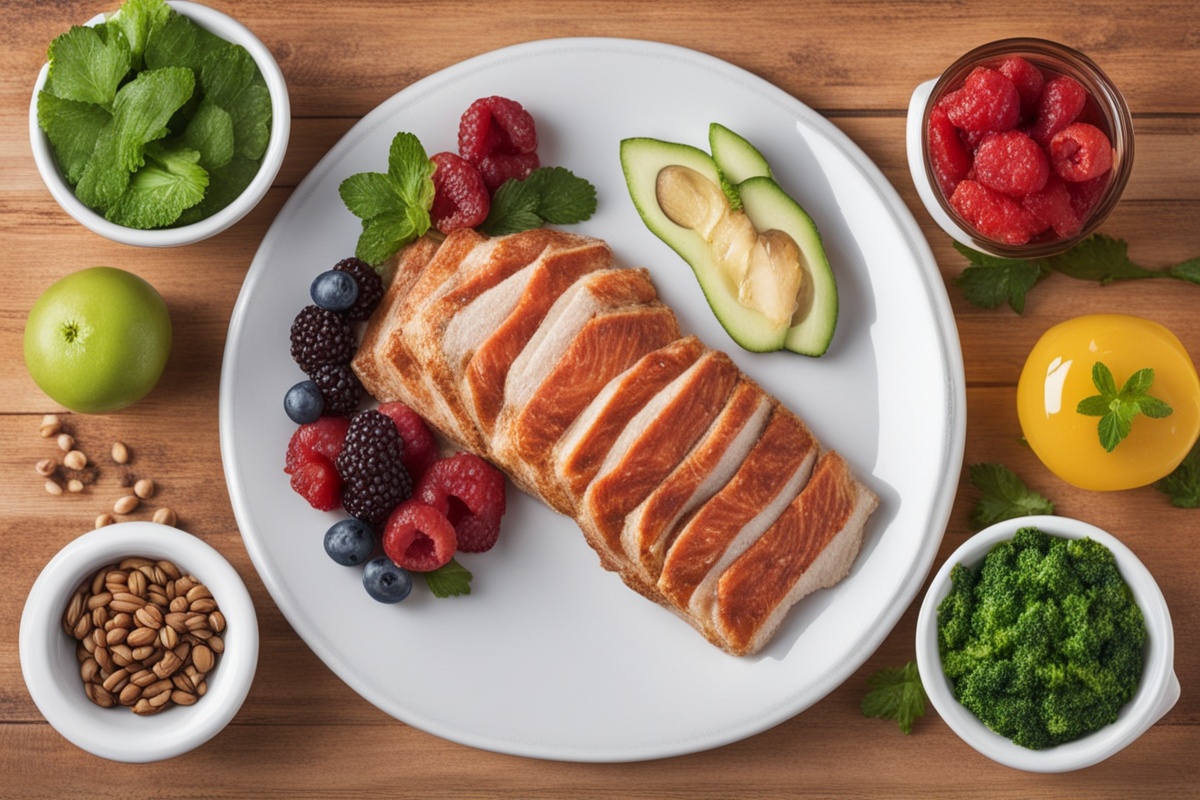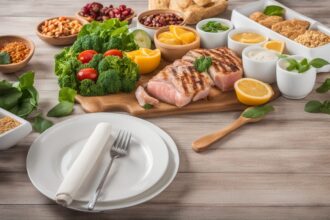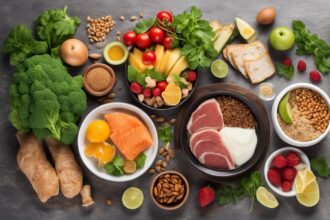Hey there, health enthusiasts! If you’ve been exploring ways to improve your wellness, you’ve likely stumbled upon the buzz surrounding fasting. Whether you’re practicing intermittent fasting, a 5:2 diet, or a full-day fast for spiritual or health reasons, one thing is clear: the fasting benefits are hard to ignore. From weight management to improved mental clarity, fasting has become a go-to strategy for many. But here’s the million-dollar question—how do you break your fast or plan meals around fasting windows without undoing all the good work? In this post, I’m diving deep into creative and nutritious fasting meal ideas that complement the incredible advantages of fasting. I’ll also sprinkle in some science to back up why fasting works and how to eat strategically during non-fasting hours. Let’s get started on fueling your body the right way!
What Are the Fasting Benefits? Understanding the Why Behind the Practice
Before we jump into meal ideas, let’s chat about why fasting has gained such a massive following. The fasting benefits
Key Principles for Meals Around Fasting Windows
When you’re fasting, whether it’s for 16 hours a day or a full 24 hours once a week, what you eat during your eating windows is just as important as the fast itself. The goal is to maximize the fasting benefits by nourishing your body without overloading it. First, prioritize nutrient-dense foods—think lean proteins, healthy fats, and complex carbs—to replenish energy without causing blood sugar spikes. Hydration is also non-negotiable; fasting can dehydrate you, so water, herbal teas, or electrolyte drinks (without sugar) should be your best friends. Lastly, avoid overeating when breaking a fast. Your digestive system needs a gentle reintroduction to food after a break, so start small and build up. With these principles in mind, let’s look at some practical meal ideas tailored to fasting lifestyles.
Breaking Your Fast: Gentle and Nutritious Meal Ideas
Breaking a fast is a delicate moment. After hours (or days) without food, your body craves nourishment, but dumping a heavy meal on it can lead to discomfort or even negate some fasting health advantages. The trick is to start with easily digestible foods that still pack a nutritional punch. Here are some ideas to ease your system back into eating while supporting the fasting benefits like improved digestion and sustained energy:
- Bone Broth with Veggies: A warm bowl of bone broth is rich in collagen and minerals, soothing your gut after a fast. Toss in some steamed spinach or zucchini for added vitamins without overwhelming your stomach.
- Avocado and Egg on Whole-Grain Toast: This combo offers healthy fats from avocado and protein from the egg, helping you feel full while keeping portions light. Opt for a small slice to avoid overeating.
- Greek Yogurt with Berries: Plain Greek yogurt provides probiotics for gut health, and a handful of berries adds antioxidants. Keep it unsweetened to avoid sugar crashes post-fast.
- Vegetable Soup: A light, broth-based soup with carrots, celery, and a sprinkle of herbs is hydrating and gentle, perfect for breaking a longer fast without stress on your system.
Filling Meals for Your Eating Window: Sustaining the Fasting Benefits
Once you’ve eased back into eating, it’s time to focus on meals that sustain energy and complement the fasting benefits like weight management and metabolic health. During your eating window, aim for balanced meals that include all macronutrients—protein, fats, and carbs—to keep hunger at bay and support muscle repair, especially if you’re active. Timing also matters; eating earlier in the day may align better with your body’s circadian rhythm, potentially enhancing fasting’s metabolic effects (Longo & Panda, 2016). Here are some hearty yet healthy ideas for your main meals:
- Grilled Salmon with Quinoa and Asparagus: Salmon is packed with omega-3 fatty acids for heart health, while quinoa offers complex carbs and protein. Asparagus adds fiber and keeps the meal light.
- Chickpea and Spinach Curry with Brown Rice: This plant-based option is rich in iron and fiber, supporting energy levels. Brown rice provides a slow-release carb to keep you full longer.
- Turkey and Veggie Stir-Fry: Lean turkey paired with a mix of bell peppers, broccoli, and a splash of low-sodium soy sauce makes for a protein-packed, low-calorie meal ideal for post-fast recovery.
- Sweet Potato and Black Bean Bowl: Sweet potatoes are a fantastic source of vitamins and slow-digesting carbs, while black beans add protein and fiber—a perfect duo for sustained energy.
- Chicken Avocado Salad: Combine grilled chicken, avocado, mixed greens, and a drizzle of olive oil for a meal rich in protein and healthy fats, supporting satiety without heaviness.
Snacks to Support Fasting Health Advantages
Snacking during eating windows can be a great way to maintain energy, but it’s easy to overdo it and undermine the fasting benefits. The key is to choose snacks that are nutrient-dense and portion-controlled. Avoid processed junk—think chips or candy—that can spike your blood sugar and leave you crashing. Instead, opt for whole foods that stabilize energy and keep you aligned with your fasting goals. Nuts, for instance, are a fantastic source of healthy fats, though they’re calorie-dense, so measure out a small handful (Harvard Health, 2020). If you’re new to fasting, small snacks can also help transition your body into longer fasting periods without feeling deprived.
Common Mistakes to Avoid When Planning Fasting Meals
Even with the best intentions, it’s easy to slip up when planning meals around fasting. One major pitfall is overcompensating during eating windows by consuming too many calories, which can cancel out the fasting benefits like weight loss or improved insulin sensitivity (Johnstone, 2015). Another mistake is neglecting hydration—fasting doesn’t mean skipping fluids, and dehydration can lead to headaches or fatigue. Also, beware of relying on sugary or processed foods to “reward” yourself after a fast; these can disrupt the metabolic balance fasting helps create. Lastly, don’t ignore your body’s signals. If you feel unwell or overly hungry, it might be a sign to adjust your fasting schedule or meal composition. Listen to yourself, and tweak as needed to make fasting sustainable.
So, there you have it—a roadmap to crafting meals that enhance the incredible fasting benefits while keeping your body nourished and happy. Fasting isn’t just about skipping meals; it’s about intentional eating that supports your health goals, whether that’s better energy, weight management, or mental clarity. By starting with gentle foods to break your fast, focusing on balanced meals during eating windows, and avoiding common pitfalls, you can make fasting a seamless part of your lifestyle. Remember, everyone’s body responds differently, so experiment with these meal ideas and adjust based on what feels right for you. Have a favorite fasting-friendly recipe or tip? Drop it in the comments—I’d love to hear how you’re making fasting work for you!
References
- Barnard, N. D., Levin, S. M., & Yokoyama, Y. (2019). A systematic review and meta-analysis of changes in body weight in clinical trials of vegetarian diets. Journal of the Academy of Nutrition and Dietetics, 115(6), 954-969. https://doi.org/10.1016/j.jand.2014.11.016
- Harvard Health. (2020). The truth about fats: The good, the bad, and the in-between. Harvard Medical School. https://www.health.harvard.edu/staying-healthy/the-truth-about-fats-bad-and-good
- Johnstone, A. (2015). Fasting for weight loss: An effective strategy or latest dieting trend? International Journal of Obesity, 39(5), 727-733. https://doi.org/10.1038/ijo.2014.214
- Longo, V. D., & Panda, S. (2016). Fasting, circadian rhythms, and time-restricted feeding in healthy lifespan. Cell Metabolism, 23(6), 1048-1059. https://doi.org/10.1016/j.cmet.2016.06.001
- Ageing Research Reviews, 39, 46-58. https://doi.org/10.1016/j.arr.2016.10.005
- Tinsley, G. M., & La Bounty, P. M. (2015). Effects of intermittent fasting on body composition and clinical health markers in humans. Nutrition Reviews, 73(10), 661-674. https://doi.org/10.1093/nutrit/nuv041






